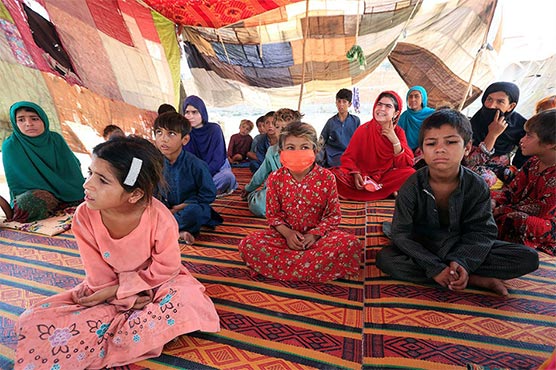A quarter-billion children getting no education: UN

UNESCO said children from poorer were at a distinct educational disadvantage in many countries.
PARIS (AFP) - Nearly 260 million children had no access to schooling in 2018, a United Nations agency said in a report Tuesday that blamed poverty and discrimination for educational inequalities that are being exacerbated by the coronavirus outbreak.
Children from poorer communities as well as girls, the disabled, immigrants and ethnic minorities were at a distinct educational disadvantage in many countries, the UN s Paris-based education body UNESCO said.
In 2018, "258 million children and youth were entirely excluded from education, with poverty as the main obstacle to access," the report found.
This represented 17 percent of all school-age children, most of them in south and central Asia and sub-Saharan Africa.
The disparities worsened with the arrival of the coronavirus crisis, which saw over 90 percent of the global student population affected by school closures, the report said.
And while children from families with means could continue schooling from home using laptops, mobile phones and the internet, millions of others were cut off entirely.
"Lessons from the past -- such as with Ebola -- have shown that health crises can leave many behind, in particular the poorest girls, many of whom may never return to school," UNESCO s director general Audrey Azoulay wrote in a foreword.
- Pushed out -
The report noted that in low- and middle-income countries, adolescents from the richest 20 percent of households were three times more likely to complete the first portion of secondary school -- up to age 15 -- than those from poor homes.
Children with disabilities were 19 percent less likely to achieve minimum reading proficiency in 10 of these nations.
In 20 poor countries, mainly in sub-Saharan Africa, hardly any rural girls complete secondary school, UNESCO said.
And in richer nations, 10-year-olds taught in a language other than their mother tongue scored 34 percent lower than native speakers in reading tests.
In the United States, LGBTI students were almost three times more likely to have stayed home from school because they felt unsafe.
"Unfortunately, disadvantaged groups are kept out or pushed out of education systems through more or less subtle decisions leading to exclusion from curricula, irrelevant learning objectives, stereotyping in textbooks, discrimination in resource allocation and assessments, tolerance of violence and neglect of needs," the report said.
- Education segregation -
Two African countries still ban pregnant girls from school, 117 countries allow child marriages, and 20 have yet to ratify an international convention that bans child labour.
Some 335 million girls attended schools that did not provide them with the water, sanitation and hygiene services they need to stay in class while menstruating.
In several central and eastern European countries, Roma children are segregated in mainstream schools.
And in Asia, displaced people such as the Rohingya are taught in separate systems.
"Many countries still practice education segregation, which reinforces stereotyping, discrimination and alienation," the report said.
"Just 41 countries worldwide officially recognised sign language and, globally, schools were more eager to get internet access than to cater for learners with disabilities," it said.
UNESCO urged countries to focus on disadvantaged children when schools reopen after coronavirus lockdowns.
"To rise to the challenges of our time, a move towards more inclusive education is imperative," Azoulay said. "Failure to act will hinder the progress of societies."


